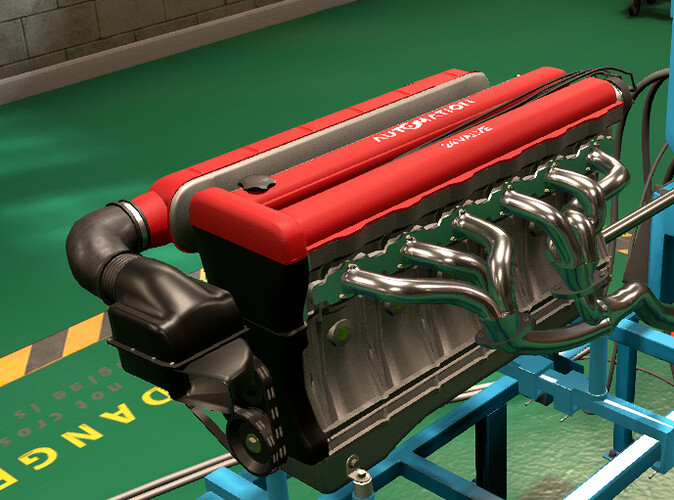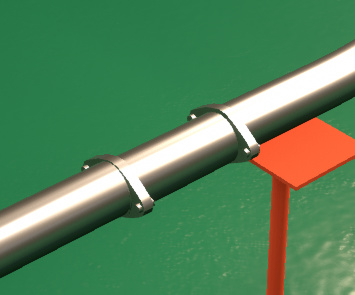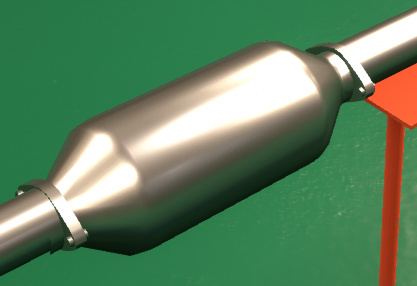Part 2: Engine Families
First of all we have the engine family tab. Now this should serve as the base for multiple engines in different trims or even models, so you want to think about how you set up an engine here so it can be adapted for as many models as possible. Doing this saves money and engineering time.

On the left you can change the family name, and on the right the variant name (Like trims of a car).

In the top left of the screen we have the family year selector. This year has to be before the variant year.
First of all we have the configuration of the engine. At the time of writing we have 4 configurations, and a total of 13 different types of engine.
The configuration can change the way your car turns out drastically, so this choice is important.
I3 - This has the lowest costs, ET and PU of all the engine types. It is the second lightest engine type, and is generally good for budget cars that need to be produced cheaply and quickly. The downside to it is that it is very unsmooth, and also is unable to rev as high. This is available from the start of the game.

I4 - Basically a larger I3. A bit smoother, a bit more expensive, a bit higher ET and PU. This engine is most common in real life, especially in more normal and standard family cars. It is also available from the start of the game.

I5 - Between the I4 and I6 in everything. Unlocks in 1970

I6 - This is the second smoothest engine type, and currently the best engine to turbocharge because the six cylinders are all feeding into one turbo. Works well for lower end luxury or sports cars. Available from the start.

60 degree V6 - This is the lightest engine configuration, and is fairly good at everything. It is also very compact so it can fit in lots of bodies. This engine isn’t great of turbo charging, and has a much longer ET and PU than I6s, while being much less smooth. Still smoother than I4s unless you’re an idiot that makes silly I4s. Recommended for sports cars and track cars. Unlocks in 1960.

60 degree V8 - Slightly larger than a V6, and a bit heavier and smoother. Is available from the start of the game.

V12 - The largest, smoothest, most expensive, highest PU and ET engines. Very prestigious. Good for super and hypercars, and luxury cars. Available from the start.

90 degree V6 - Less smooth and reliable than a 60 degree V6. The only reason you would pick this over a 60 degree is if you have familiarity built up with 90 degree V8s. Unlocks in 1960

90 degree V8 - Smoother and more reliable than a 60 degree V8, as well as lower ET and PU. Slightly more expensive and heavier though. It can have the choice between a crossplane and flatplane crank. Available from the start.

V10 - Somewhere between a V12 and V8. Useful for when prestige matters but you can’t quite fit a V12 in an engine bay. Unlocks in 1985.

V16 - The biggest, heaviest, most prestigious engine currently in Automation. If smoothness and prestige are important, this is the one to go for, but beware that not many cars will be able to fit it at any size. Available from the start

Boxer 4 - Heavier, but a fair bit smoother than a I4. The other advantage of these is the low centre of mass they provide. This means you can usually improve handling with this engine option. Also can only have twin turbos, unlike the I4. Available from the beginning.

Boxer 6 - Less smooth and heavier than an I6, with slightly higher PU, but far smoother and with lower PU and ET than V6s. Lower centre of mass means it can improve handling. Available from the start.

Family Capacity is where you can set the maximum size of an engine family. Any variants of the engine you make can be smaller, but not larger. You can change capacity in two ways, changing bore, and changing stroke.
Bore - This is how wide the piston is. This increases weight quickly, but is also an easy way to increase capacity. A higher bore can also increase the chances of running into valve float. A lower bore lowers octane, increases smoothness, and reduces service and material costs.

Remember the flow bench I mentioned in part 1? This is the first place where you can influence that. If your valves are restricting flow, a larger bore increases the size of the valves, so reduces the restriction.
Stroke - This is the distance the piston travels. This adds less weight than increasing bore, but quickly limits RPM in the bottom end components. A lower stroke allows you to rev higher, increases smoothness, and reduces service and material costs.

When an engine has a higher bore than stroke, it is called oversquare, and when the bore is smaller than stroke, it is undersquare. Oversquare engines are usually better at revving high, although can run into valve float issues, while undersquare engines are usually lighter and more compact.
The advantages of having more pistons is that you can have a lower bore and stroke without losing displacement, so you can rev higher without running into reliability issues. They are also usually smoother. The downside is more cylinders are usually more expensive, and have higher ET and PU.
Also bear in mind that having more cylinders means you can have the same stroke and just lower displacement, so there are times where you could have an equal displacement V6 and V8 with the same stroke, but because the V8 can have a much lower bore, it could be lighter.
A good idea is to try and make stroke as high as you can to reduce weight, but just low enough to not damage your internals from high RPMs. Also bear in mind that you may want to take into account that other variants of your engine families could require a higher redline, so it is all a balancing act to reduce weight while maintaining high RPMs.
There are 4 different block materials and 3 different head materials in Automation, which can make a significant difference in making a good car.

Cast Iron - This is very heavy, cheap, and simple. Also the most reliable out of all materials, and reduces loudness the most. Available from the beginning.
Aluminium - Far lighter, but in the early years has a massive reliability penalty compared to cast iron. By the 80s and 90s it becomes reliable enough to not be too much of an issue. Aluminium heads unlock in 1950, and the block in 1960.
AlSi - Short for aluminium silicon, basically a better aluminium. Lighter, more reliable, lower ET if you match materials for head and block, and the only real downside is that it is slightly more expensive. Also matches loudness with aluminium. Any familiarity with aluminium should also help you engineer this, so there’s no reason really not to pick it vs aluminium. Unlocks in 1996.
Magnesium - This is only available for block material. Lightest of all the materials, and doesn’t have too much of a negative effect on reliability. Second quietest block. Unlocks in 2005.
You can mix materials between head and block, but this isn’t really recommended. In real life it wasn’t uncommon to see a cast iron block with an aluminium head, and in game that does also improve reliability compared to an all aluminium engine. But anything else is basically pointless and reduces reliability, for example an aluminium block with a cast iron head reduces reliability as much as an AlSi head. Mixing materials also increases PU by a small amount.
Head and valves are also very important to your engine. These can change drastically the cost, ET and PU of an engine, along with how high it can rev and how fuel efficient it is. As a general rule as you run down the valvetrain options, parts can rev higher and are more efficient, but also a lot more expensive. All valvetrain options are available from the start, but not all valve numbers are.
Pushrod (OHV) - This is incredibly basic. Cheap, low revving, and will quickly run into valve float issues. Popular on muscle cars and trucks, and is still used today, most famously on Chevrolet and Dodge muscle cars. Very compact and light too. Also much shorter than other valvetrains.

Direct Acting Overhead Cam (DAOHC) - An upgrade from OHV, and allows for a decent bit higher RPM at a slightly higher cost, and is larger and heavier. This will also develop familiarity with DOHC.

Overhead Cam (OHC) - Common in the 80s and 90s, but less so today. This is fairly usable throughout the entire game. Also the same size as DAOHC, but a bit heavier.

Dual Overhead Cam (DOHC) - Double the fun of OHC. Rather expensive, but does allow for the best results. In real life this is the most commonly used type of valvetrain today. Very large and heavy.

The number of valves can also have a large effect on ET and PU.


2 - This is available for all valvetrains. Cheap and simple.
3 - This is exclusive to OHC. A nice middle ground between 2 and 4 valves.
4 - Available from the beginning for OHC and DOHC. An interesting thing to note here is that 4 valve OHC engine is better than a 2 valve DOHC, and cheaper too, but will encounter valve float earlier.
5 - Available from 1989 for DOHC only, and doesn’t allow VVL on the engine.
Increasing the number of valves can also reduces any flow restrictions the valves give in the flow bench.

Having VVL can be a major benefit as it allows you go adjust a low RPM and high RPM cam profile, allowing you to get power and still keep fuel economy. The most famous example of VVL is VTEC. In game it unlocks in 1994.



































































 Even after 200 hours of playing automation, I still got something out of it.
Even after 200 hours of playing automation, I still got something out of it.





















